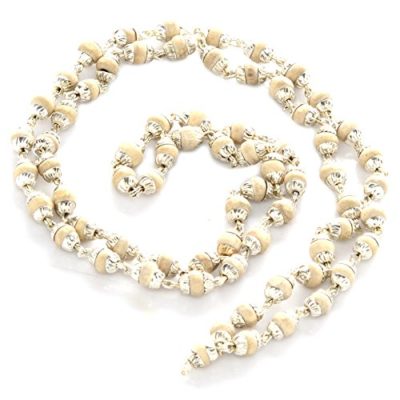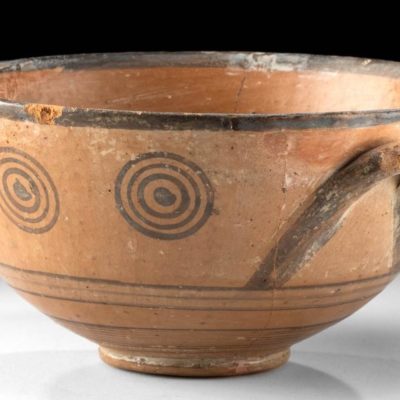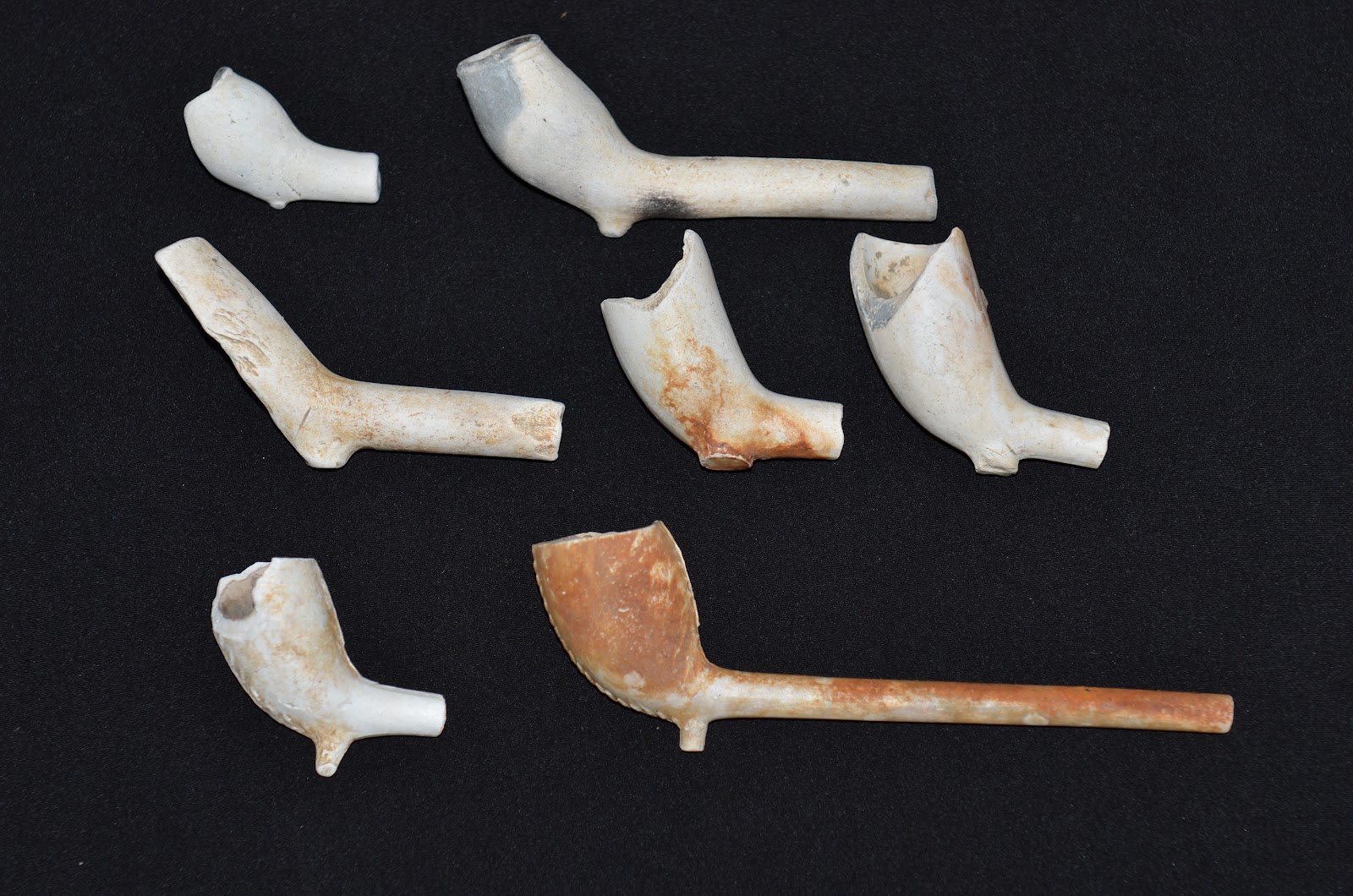The Engraved Shell Gorget is one of the rarest artifacts made during the Southeastern Ceremonial Complex or SECC (also called the Southern Cult, the Mississippian Period, and the Temple Mound Period). The prehistoric natives began cutting and engraving pieces of conch and whelk shell as early as around AD 1000 in the current states of Oklahoma, Arkansas, Illinois and Tennessee. As the SECC advanced chronologically, it also moved geographically and eventually reached the Carolinas and Virginia around AD 1300-1400. This cultural manifestation was dominated by kingdoms composed of ordinary citizens and elite family rulers who required the lower class society members to raise their crops, hunt for their food, and also make religious/ceremonial/political prestige objects for the ruling family members. These objects included effigy pottery vessels, zoomorphic stone pipes and, of course, shell gorgets. Around AD 1450 the natives, living in the Appalachian Mountains from Georgia to Virginia, began engraving rattlesnakes on their shell gorgets. These mound building and gorget making societies continued to flourish in the mountainous region until the sixteenth century when the Spanish began to enter their lands. At that point the native cultures began to crumble.

In AD 1567, the Spaniard Juan Pardo, led a group of explorers into western North Carolina and built a fort in Burke County, NC near the current town of Morganton. It is believed that Pardo, being threatened by an Indian king in the mountains and also suspecting that he might find gold there, sent some of his soldiers to southwest Virginia in order to investigate that region. The leader of this group, Sergeant Hernando Moyano de Morales, later reported that they had burned an Indian town and killed a thousand natives, which is apparently true, except for the huge number killed. These ancient Americans made a particular style of rattlesnake engraved shell gorget that is named for a Virginia salt springs town – Saltville.
Around AD 1600, a group of Indians moved to a site on the Dan River near it’s confluence with Town Fork Creek in current Stokes County, NC. There they built houses, planted crops and raised their families in this village that today is called Upper Sauratown. And they made, and/or brought with them, the style of rattlesnake engraved gorget used at the supposed Virginia massacre site, the Saltville style. A retired Virginia Tech professor, Dr. Jim Glanville, has done extensive work in Virginia and North Carolina studying and cataloging the elusive Saltville rattlesnake engraved gorgets. He has determined that almost all the approximately fifty known VA and NC examples of this artifact (most of which have been discovered by Dr. Glanville in old collections) were made and used only in a relatively small area in and around two locales, Washington/ Smyth County, VA (Saltville sits on the border of these two counties) and Stokes County, NC. He has developed a viable theory that after the Spaniards attacked the Indian village in Saltville, the natives, who survived the disaster, gradually moved southeast and after about thirty years, finally settled in a new home – Upper Sauratown. A few engraved shell gorgets have been found in an almost direct line between Smyth and Washington Counties and Stokes County which provides further evidence that these natives probably made this journey and temporarily settled, in more than one location, along the route before reaching Sauratown.
The shell gorget was made by laboriously cutting a piece of the whorl of a marine gastropod shell, usually in a circular shape, and then drilling two holes along one edge so it could be suspended around a person’s neck. They were normally made in the size range of two to three inches in diameter but some extraordinary examples up to six inches across have been found. They are named gorget from the French word “gorge” which was a medieval piece of armor used to protect the wearer’s throat. Most Indian made shell gorgets were not engraved but some were embellished, usually on the concave surface, with various motifs. In the case of the Saltville style gorget, the motif was a stylized snake. The body of the serpent was engraved as coiled around the circular perimeter of the gorget and had cross hatching to simulate the snake’s scales and body markings. At the small end of the body, there are several chevrons to replicate the snake’s rattles and near the center of the gorget are concentric circles used to simulate the head and eye. One or more large triangles are adjacent to the eye circles (pointing to the left or right) and are considered to be a representation of the serpent’s mouth, often complete with teeth, but there are never examples of sharp reptile fangs in the mouth engravings. On the opposite side of the eye, some of these gorgets have two oddly placed small triangles pointing toward the gorget edge. These are generally construed as the “weeping eye” motif which is a documented style of ceremonial art from the SECC. A few of these gorgets have elongated cutouts or fenestrations and/or simple holes adjacent to the body to further delineate the overall shape of the snake. There have been estimates of about 5,000 shell gorgets being found in the southeastern USA with maybe 15-20% of these being engraved in any fashion. Five thousand, or even 15-20 % of that, may seem like a large number for an artifact considered to be so rare but since there probably have been millions of Indian artifacts found in this country, this number is rather small, percentage wise.
In April of 1972, two men searched for Indian artifacts in the plowed ground on the Upper Sauratown Site. They found a rare artifact – a rattlesnake engraved shell gorget. But their luck continued as they immediately found two more of these Saltville style gorgets along with a rose quartz crystal. This remarkable group could have been from a burial of one of the village elites some three to four hundred years ago. The three gorgets were, indeed, rare but the inclusion of the red quartz crystal made this grouping amazingly unique. Rose quartz is the only member of the quartz family of minerals that commonly does not grow itself into the crystalline form which makes this little red gemstone exceptional. But other than rarity, why does the crystal make this small cluster of artifacts so unique? The people of the Mississippian and Historic Periods had many legends including one about a giant monster called by many names including Great Serpent, Uktena, Underwater Panther and Piasa. This mythical creature supposedly lived in deep lake and river pools in the southeastern mountains and the fearsome supernatural had a physical structure in the shape of a snake or a cougar, with wings and occasionally an antlered head. In the case of the serpent type imaginary being, its body was covered with scales that “glittered like fire light” and in the middle of its head was a shining red quartz crystal. According to legend, if a human looked at the quartz crystal, he would be drawn to the creature by the shining light and would have been killed but if the human could kill the serpent and take the crystal from its head, he would be regarded as the greatest healer and could also foretell the future. Any society priest and/or healer would certainly have treasured one of the crystals said to have come from the creature’s head and upon the shamans demise, would probably have had this jewel buried with him. This particular rose quartz crystal is very worn, probably from being rubbed and touched and handled for many, many years. The writer has no knowledge of another grouping of three engraved rattlesnake shell gorgets plus a rose quartz crystal being found together anywhere else in the southeast. Yes this was an amazingly unique find and it leads to some questions. Did these artifacts come from the interment of a great leader or shaman and if so, just who was he or she? Were the three shell gorgets made in Sauratown or brought from the Saltville vicinity? And even more interestingly, did the design influence for the rattlesnake shell gorget come from the mythical Great Serpent or Uktena? Remember the two odd triangles beside the snake eye. Are they replicas of the wings of the mythical beast? Or as some writers believe, did the snake design come from the Mexican deity Quetzalcoatl, also known as the feathered serpent god? These questions will probably never be answered but that should not a determent from enjoying the rarity and beauty of the Three Saltville Style Gorgets and a Crystal.
REFERENCES:
Adkins, Jeff
Personal Communications
1988
Beck, Robin A.
“From Joara to Chiaha: Spanish Exploration of the Appalachian Summit Area, 1540-1568″,
SOUTHEASTERN ARCHAEOLOGY, VOL. 16
1997
Beck, Robin A, David G. Moore and Christopher B. Rodning
“Identifying Fort San Juan: A Sixteenth Century Spanish Occupation at the Berry Site, North Carolina”,
SOUTHEASTERN ARCHAEOLOGY, VOL. 25
2006
Brain, Jeffrey P. and Phillip Phillips
SHELL GORGETS – STYLES OF THE LATE PREHISTORIC AND
PROTOHISTORIC SHOUTHEAST
1996
Glanville, James, PhD
ART IN SHELL OF THE ANCIENT SOUTHWEST VIRGINIANS
2007
Hammett, Julia E.
“Shell Artifacts from the Carolina Piedmont”,
THE SIOUAN PROJECT: SEASONS I AND II
1987
Kneberg, Madeline
“Engraved Shell Gorgets and Their Associations”,
THE TENNESSEE ARCHAEOLOGIST, VOL. 15
1959
Maus, James E. `
“The Dan River Rattlesnake Engraved Shell Gorgets”,
CENTRAL STATES ARCHAEOLOGICAL JOURNAL, VOL. 35
1988
Maus, James E.
“Rattlesnake Engraved Shell Gorget: The Saltville Style”,
PREHISTORIC AMERICAN
1999
Muller, Jon D.
“Archaeological Analysis of Art Styles”,
THE TENNESSEE ARCHAEOLOGIST, VOL. 22
1966
Muller, Jon D.
“The Southern Cult”,
THE SOUTHEASTERN CEREMONIAL COMPLEX: ARTIFACTS AND ANALYSIS
1989
Reilly, F. Kent III
“People of Earth, People of Sky”,
HERO, HAWK, AND OPEN HAND
2004
Smith, John G.
Personal Communications
2000





